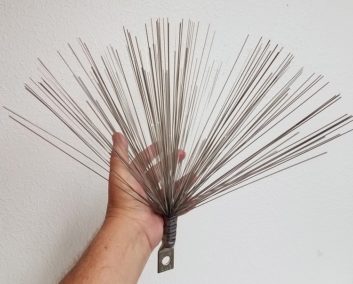Some recent letters to the editor of Radio World:
Talk of AM Digital Is Futile
Re “AM Advocates Watch and Worry”:
The topic of all-digital on the AM band has been rehashed and disposed of over so many years now, I’m surprised Radio World gives it space anymore. So once again:
Akin to the flurry of interest in AM stereo and quadraphonic now long gone, there is no consumer demand for digital AM, and virtually no digital AM radio receivers commonly available to receive it, save for new car dashboards.
New car penetration alone will not substantiate the argument for wholesale conversion from analog to digital AM transmission and transmitter plant conversions. The discussion is futile and moot.
— from James B. Potter, Cutting Edge Engineering, Kimberling City, Mo.
How About an FM Translator Window?
Re “FM NCE Fiing Window Coming in 2021”:
It’s been more than a decade since the last NCE FM filing window, but I can’t even recall when was the last time the FCC allowed applications for translators in the reserved band.
Once this round of NCE FM and LPFM apps are filed, shouldn’t the FCC consider a translator window as well? Isn’t the notion of decades between filing windows for any service absurd?
— from Harry Kozlowski
About Static Dissipaters
Mr. Persons, I’m writing regarding your article of regarding the lightning strike to KJRM’s broadcast facility (“What Happens When Lightning Hits”:

While I’m always fascinated by the effects of lightning strikes and enjoyed the article, I was concerned by your comments on static dissipaters. While these devices are sold in the North American market by several firms, they have no code support in either the U.S. or Canada, and have not been shown in the field to reduce the incidence of lightning strike.
There is no known method of consistently preventing lightning from striking, and static dissipaters of the kind you mention act no differently than a conventional lightning rod. As such, these devices are not approved for use on government or military facilities, and do not enjoy wider industry support in North America.
I’d be happy to pass along links to scientific studies, or put you in touch with expert scientists in the lightning protection field. Thanks for your consideration.
— from Simon Larter, Dobbyn Lightning Protection, Calgary, Alberta
Mark Persons replies:
Dobbyn lightning terminals/lightning rods are Benjamin Franklin technology from 250 years ago. Don’t get me wrong, they are a good way to conduct lightning strikes to the ground. I prefer static dissipaters, which are multiple sharp points to “bleed off” static charges so the voltage between the sky and ground is less. That results in no lightning strike or a strike with less intensity. Static dissipaters are the same as having one hundred or more air terminals, not just the one that a tower traditionally has next to a top beacon.
A station I did contract engineering work for years ago would be hit by lightning every summer with frequent damage to transmitters and other equipment at the base of their 380-foot tower. I was able to convince a new owner to spend a few thousand dollars to install static dissipaters the next time tower lights were changed. Fifteen years later, there hasn’t been one instance of lightning damage. Likely they’ve had a few strikes of lower intensity.












